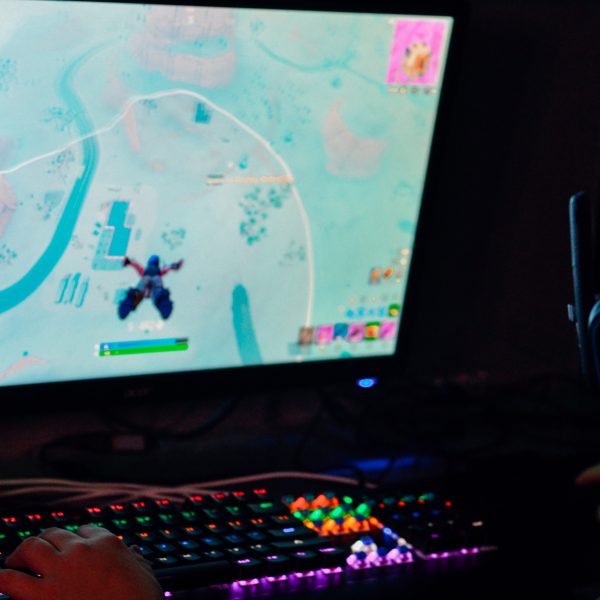Moving Towards Purposeful Digital Technology Uses in Early Childhood Education

When it comes to using digital technologies with children, there can often be a lot of differing opinions and mixed practices around the early childhood sector. Wanting to help dispel the confusion or uncertainty of what we should or shouldn’t be doing, we have created a helpful guide to act as a starting point.
Often referred to as the Three C’s of digital device use, it is a way to inform your thinking and reflection of potential uses of digital devices with young children.
Before starting, it’s important that we don’t just outright reject the idea of digital devices being used in Early Childhood Education.
We see reference to it explicitly mentioned on multiple occasions within the update to the EYLF v2.0, with just the phrase “digital technologies” being mentioned 30 times!
Devices have now become a prominent part of our daily lives, both working and personal, that won’t be going anywhere anytime soon.
Gone are the days of relying on guidelines around the length of time per day at any given age range. Now we must enter into adjudicating the readiness of the child, and the quality of the use or applications instead.
Just remember to carefully consider the age, intention, and readiness of your group of young learners.
Consumption
Consumption-based uses are when children are just watching the content or media that you are presenting them. Oftentimes, you can tell when children are just consuming media by what their role is. If children are required to sit, stand or otherwise be still to merely ‘watch’ the screen, then the children are just consuming digital media. In most cases, this would be a poor quality use of digital devices and can actually have detrimental effects.
Instead of just consuming media, critically reflect and ponder: What else could we be doing? Could it be an oral song, or a dance with the class? Could we get outside and get active, or does this ‘group time’ need to be happening at all? There are hundreds of things we could be doing, each of them is a choice. Why are we choosing to do this instead of anything else?
Try your best to avoid providing digital media for children to ‘consume’.
Creativity
As educators, we are always looking at ways we can promote children’s creativity and outside-the-box thinking. One of the powerful tools we have in today’s modern age are digital devices.
The use of these technologies can open so many interesting applications, creative processes, and ways of viewing the world outside what is possible without them. Think about ways of letting children use video and picture taking programs to explore different perspectives or use tools that can allow for stop motion capture.
Some researchers and pioneers are even exploring virtual reality!
There’s so much we can do to let children create from nothing when using digital devices. What will you think of? ‘Creativity’ is always a great reason to use digital devices.
Connection
The world is a huge place, with children only able to connect with their immediate world and communities. What digital devices have afforded us is the ability to connect at any time to anywhere or anyone in the world.
This opens the door to use digital devices for another meaningful purpose: ‘Connecting’. Think about the ways you could use devices to connect with authors who write our favourite books, connect and explore the world beyond our local communities such as virtual tours and excursions, or even to connect with other children across other kindergartens and childcare services.
Remember, you don’t have to connect to the very far and distant. You can also use the power of the internet and cameras to connect to the micro-world of bugs, slugs, and creepy crawlies! You can magnify, research, and explore what might otherwise not be possible at all without them.
The Three C’s
So the next time you’re considering using digital technologies, remember the three different C’s.
Avoid the oftentimes mindless ‘consumption’ of digital technologies, as these are often poor-quality uses.
Promote the use of ‘creativity’ through the augmentation that digital technologies can provide both educators and young children.
Consider ways you could use digital technologies to help ‘connect’ children to different communities, people, places, and things.
Remember that as Educators and Teachers, we shouldn’t be afraid. Rather, we can become an informed digital practitioner. Whether you’re a digital native, or a bit of a digital novice, the first step is to be informed. The second step is to start.
Christopher Bradshaw is the CEO of Making Education, a specialty early childhood organisation which provides training by educators, for educators. He holds both a Diploma and Bachelor of Early Childhood Education, along with a Master of Education in Leadership and Management, and qualifications in Training and Assessment.
He is also the Director of Education and Development for KingKids Early Learning, an approved provider with five services in Victoria.
Popular

Workforce
Quality
Research
When did it start to go wrong?
2025-12-18 08:00:46
by Fiona Alston

Quality
Practice
Research
Small ways to teach babies and toddlers body safety and consent in early learning
2025-12-15 08:00:40
by Fiona Alston

Quality
Research
Food safety in early learning centres: Protecting children through better practices
2025-12-15 07:45:24
by Contributed Content
















